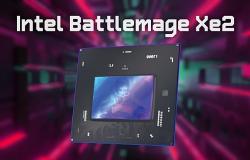“This S-curve is a test line that successfully concludes the commissioning of our metal 3D printer,” explains ESA technical manager Rob Postema.
“The success of this first print, along with other baselines, prepares us to print full parts in the near future. We have reached this point thanks to the hard work of the industrial team led by Airbus Defense and Space SAS, the CADMOS User Support Center in France, which oversees printing operations from the ground, as well as our own team at the THAT”.
Sébastien Girault, member of the Airbus team, leader of the consortium, adds: “We are very happy to have carried out the first metal 3D printing on board the ISS, the quality is as good as we could dream of.”
The metal 3D printer technology demonstrator has been developed by an industrial team led by Airbus, which is also co-funding the project, under contract to ESA’s Human and Robotics Exploration Directorate.
He arrived at the ISS in January. ESA astronaut Andreas Mogensen then installed the payload of around 180 kg on the European Draw Rack Mark II, which is part of ESA’s Columbus module.
The design of the metal 3D printer is based on the insertion of stainless steel wire into the printing area, which is heated with a high-power laser, approximately one million times more powerful than a standard laser pointer. As the wire is immersed in the melt pool, the end of the wire melts so that metal is added to the print.
The printing process is monitored entirely from the ground. All the crew on board has to do is open a nitrogen and vent valve before printing begins. For safety reasons, the printer operates inside a completely sealed box, preventing excess heat or fumes from escaping.
Four shapes have been chosen for subsequent full-scale 3D printing, which will subsequently be returned to Earth to be compared with reference prints made on the ground under normal gravity conditions.
ESA materials engineer Advenit Makaya, from ESA’s Technology, Engineering and Quality Directorate, provided advice on the project: ‘Two of these printed parts will be analyzed in ESTEC’s materials and electrical components laboratory, in the Netherlands, to help us understand if prolonged microgravity has any effect on printing metallic materials. The other two will go to the European Astronaut Center and the Technical University of Denmark, DTU.
One of ESA’s goals for future development is to create a circular space economy and recycle materials in orbit to enable better use of resources, such as reusing parts of old satellites into new tools or structures. A working version of this metal 3D printer would avoid having to send a tool with a rocket and would allow astronauts to print the necessary parts in orbit.






